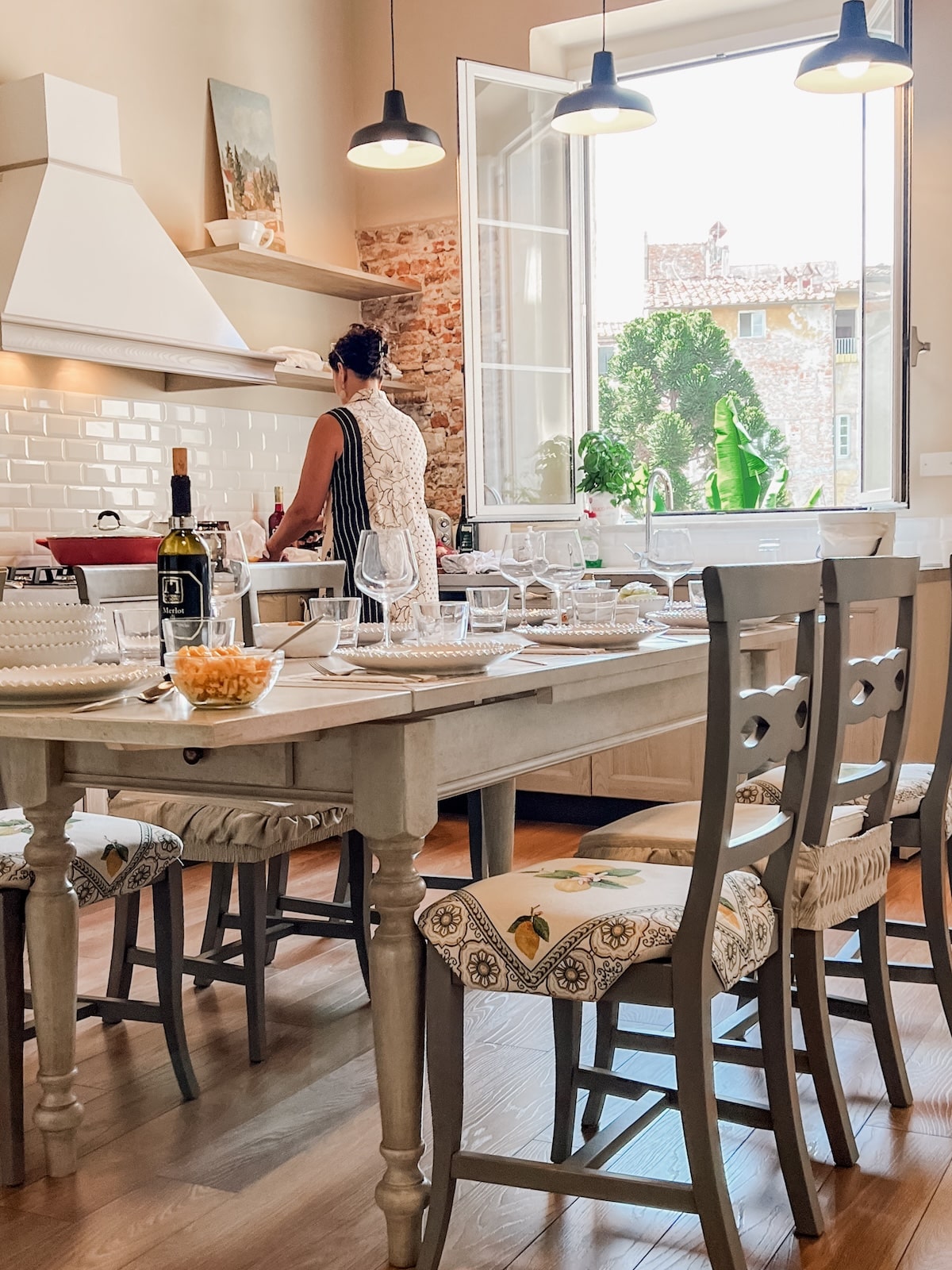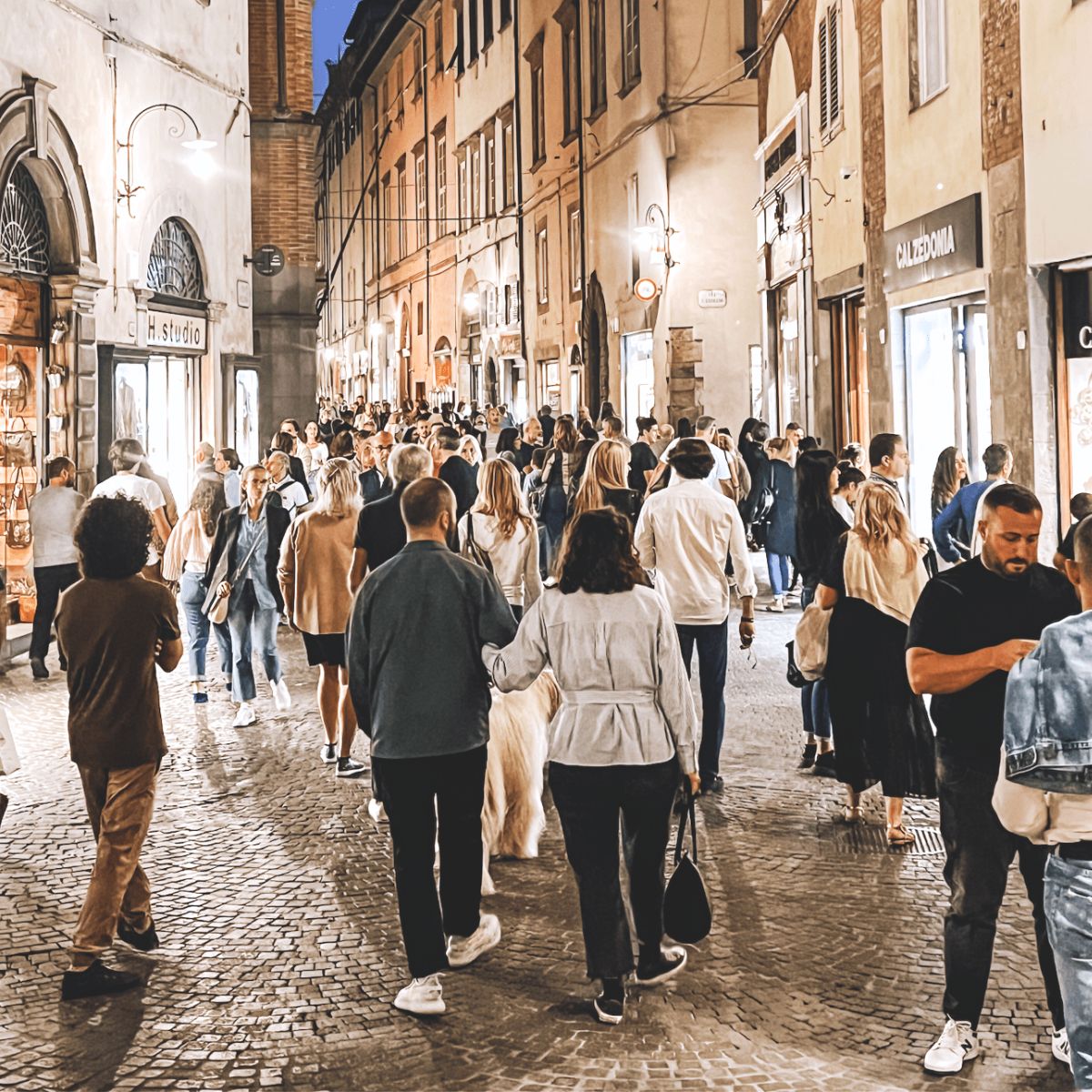
I was a college student the first time I visited Venice. The moment I stepped out of the Venice train station and caught my first glimpse of the city, I was utterly breathless.
It was like stepping into a dream, with a scene so perfect it felt almost surreal.
Venice is an absolutely stunning mix of history, architecture, and romance, making it on the bucket list of many travelers.
You might wonder if Venice is worth the hype. Like all popular tourist spots, Venice has its ups and downs.
Before adding it to your itinerary explore the pros and cons of a visit to decide if Venice is worth visiting for you.
What Makes Venice Unique?
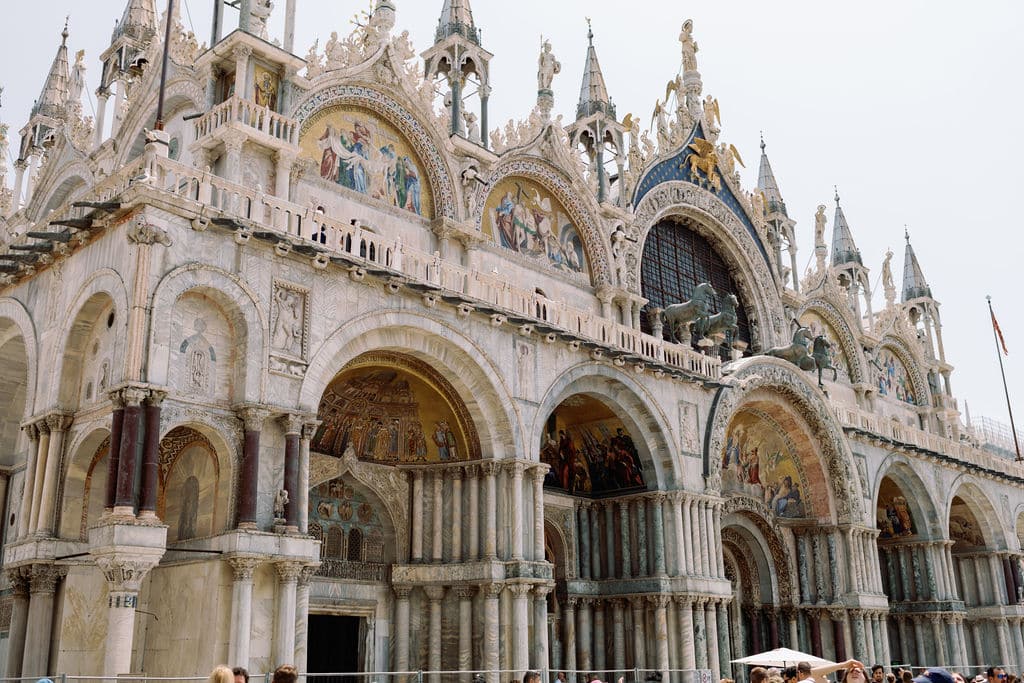
- Venice’s nickname is the “Floating City” because of its picturesque canals, bridges, and waterways. It’s a place like no other. The entire city is built on water, making it a truly unique experience for visitors.
- Venice’s history as a major center of trade and commerce during the Renaissance period has left behind a legacy of beautiful art and architecture that can still be admired today.
- While many popular tourist destinations have become modernized with the influx of visitors, Venice has managed to maintain its old-world charm and authenticity.
- Despite facing challenges such as over-tourism and climate change, the city’s residents continue to maintain their traditions and customs like the famous Carnival of Venice.
- From the vibrant colors of the buildings to the gondolas gliding through the canals, Venice is a feast for the senses and a photographer’s paradise.
Pros of Visiting Venice

- Historical and artistic treasures: You can visit cultural sites such as St Mark’s Basilica, Doge’s Palace, and the Gallerie dell’Accademia. These iconic landmarks showcase the city’s rich history and artistic achievements.
- Unforgettable atmosphere: Venice is a feast for the senses, with its unique canals, historic architecture, and charming piazzas. Getting lost in the maze-like alleyways fosters a sense of discovery and a truly unique travel experience.
- Focus on people-watching: Settle into a cafe terrace and enjoy the slow pace of Venetian life. Observe the locals chatting, children playing, and gondolas gliding by.
- Explore at your own pace: Venice is relatively small and easily walkable, perfect for slow exploration. Look beyond the main tourist attractions and discover hidden churches, tranquil gardens, and charming local shops.
- Day trips to nearby islands: Explore the laid-back charm of Murano (famous for glassblowing), Burano (known for its colorful houses and lace making), or the serene atmosphere of Torcello for a slower pace of life.
- Gondola rides (carefully chosen): While often touristy, consider a private gondola ride at dawn or dusk to experience the quiet beauty of the canals in a peaceful setting.
- Foodie paradise: Savor fresh seafood dishes, indulge in cicchetti (Venetian tapas), and enjoy local wines for a truly immersive culinary experience. Exploring local food tours or trying out cooking classes can be an incredible way to immerse yourself more fully.
Cons of Visiting Venice
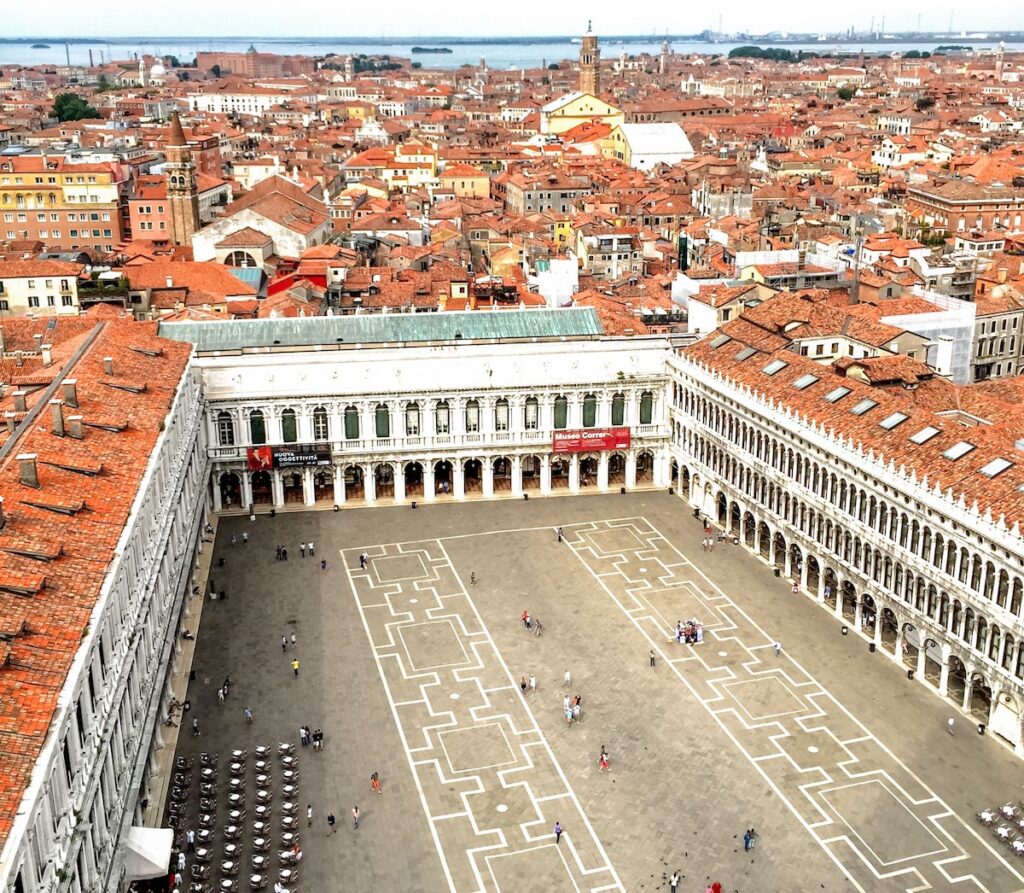
- Crowds: Venice can be incredibly crowded, especially during peak season between June and August. This may cause long lines, difficulty navigating through the streets, and an overwhelming experience.
- Expensive: Due to its popularity, Venice can be quite pricey. From accommodations to food and activities, visitors should be prepared to spend more than they would in other Italian cities.
- Acqua Alta: During the winter months, Venice experiences high tide flooding known as Acqua Alta. This can make exploring the city more difficult and may require extra precautions, such as wearing waterproof boots or using raised walkways.
- Tourist traps: Like other major cities in Italy, Venice has its share of tourist traps. It pays to do a little homework before you go and keep an eye out for common pitfalls like overpriced gondola rides, not-so-authentic Murano glass souvenirs, and cafes near major sights, like Saint Marks Square, that might charge more than three times the average prices.
- Limited accessibility: Navigating Venice with large suitcases or mobility limitations can be challenging due to its bridges and narrow streets. Pack light and be prepared for walking.
- Canals can be smelly: At low tide, canal water levels drop, exposing sediment and debris such as dead plants and marine life. This debris breaks down, emitting gases like hydrogen sulfide, with a rotten egg smell. This causes the canals to smell bad at low tide. While natural and part of Venice’s charm, it might not be pleasant for all visitors.
- No cars: While this adds to the charm of Venice, it can also make transportation difficult. Visitors must rely on walking or taking water taxis and ferries to get around, which can add up in costs. However, this also means a quieter atmosphere in the city.
- Accommodations: Many hotels in Venice are small and lack amenities like pools or gyms, which might not suit all travelers.
When Is The Best Month to Visit Venice?
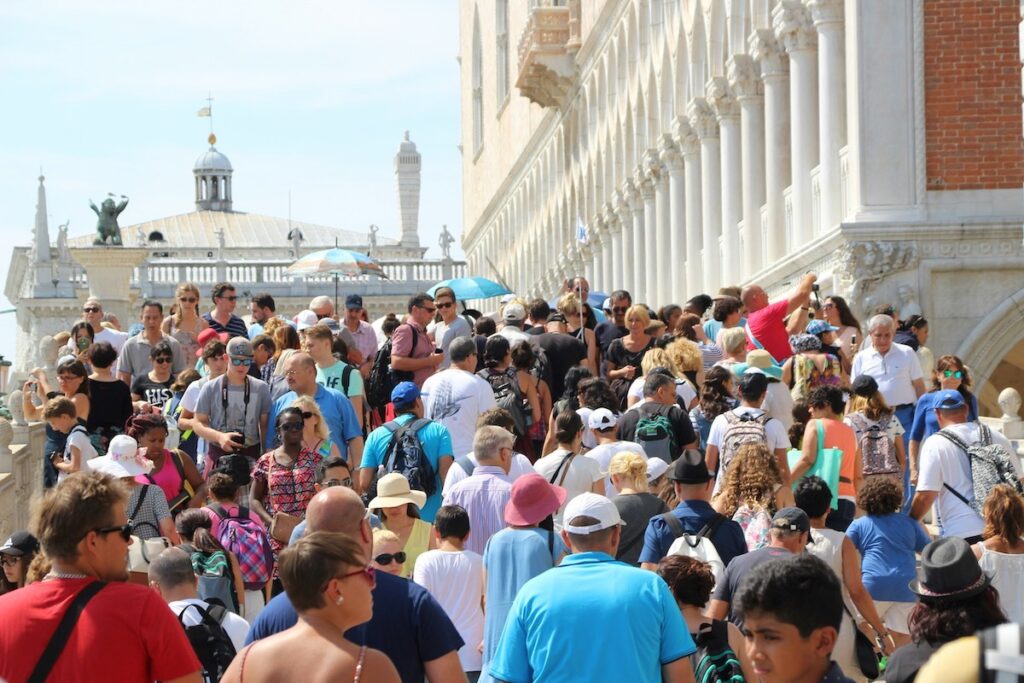
Venice can be visited all year round, but the best months to visit are from April to June and September to October.
During these months, the weather is pleasant with fewer crowds and lower hotel prices.
July and August tend to be very hot and crowded due to summer vacations, while November to March can bring high tides and cold temperatures.
It’s also worth considering visiting Venice during its Carnival in February, where the city comes alive with colorful costumes and festivities. However, keep in mind that hotel prices will be at their peak during this time.
Tips For Authentic Experience In Venice

Stay Overnight in Venice:
- Don’t be a day tripper: Choose to immerse yourself in city life rather than just popping in for a day. When the crowds of tourists thin out, the city reveals its calmer side, presenting perfect moments for you to enjoy both at dawn and dusk.
Get Lost:
- Wander aimlessly: One of my most memorable experiences in Venice happened when I turned off Google Maps and let my kids take the lead. It turned into an adventure we’ll never forget. We ended up in the Cannaregio neighborhood. It was our first encounter with this quieter part of Venice, feeling as though we had discovered something truly special.
Embrace the Passeggiata:
- The evening stroll: Immerse yourself in the daily ritual of the “passeggiata,” where locals socialize and enjoy the cool air. Grab a gelato and people-watch in a piazza, soaking in the atmosphere.
Escape the Crowds:
- Explore during the shoulder seasons. Spring and fall offer pleasant weather and fewer crowds, allowing you to experience a more relaxed pace.
Dine Like a Local:
- Skip the tourist traps. Venture away from main squares and look for restaurants with Italian menus and limited English translations.
- Taste Venice through cicchetti: Similar to Spanish tapas, cicchetti are small snacks or side dishes that are perfect for trying a variety of local flavors without committing to a full meal. Hop into a “bacaro,” a Venetian bar, to experience this culinary tradition. Pair your cicchetti with a glass of “ombra,” a local wine, for an authentic Venetian snack.
- Shop at local markets. Immerse yourself in the sights, sounds, and smells of local markets. Pick up fresh produce, cheese, and cured meats for a picnic or to cook your own meal if you’re staying in a vacation rental.
Learn a Few Italian Phrases:
A little goes a long way in Venice when trying to communicate with locals. Learn a few basic phrases and watch as doors open and smiles appear.
Connect with Locals:
- Take a cooking class: Learn to prepare traditional dishes from a local and gain insights into Italian food culture.
- Stay in a “locanda”: This term refers to a charming inn or lodging house, much like a bed and breakfast, which offers both meals and accommodations. This setting will give you a unique chance to interact intimately with the owner, creating a sense of living as a local.
Embrace the Slow Pace:
- Resist the urge to over-schedule: Leave room for spontaneity and allow yourself time to get lost, wander, and truly connect with a place.
- Savor the moments: Instead of rushing from sight to sight, linger over a coffee, appreciate the view, and enjoy the simple pleasures of Italian life.
- Embrace the siesta: Respect the afternoon break many businesses take. Use this time to relax, people-watch, or explore a quieter part of town.
Discover Lesser-Known Museums:
While the main museums in Venice, such as the Doge’s Palace and the Gallerie dell’Accademia, are must-see attractions, don’t overlook some of the smaller, lesser-known museums.
For those looking to stray off the beaten path, Venice is home to an array of lesser-known museums that offer a deep and intimate look into its rich history, art, and culture. Here are a few you shouldn’t miss:
- Ca’ Rezzonico: Dedicated to 18th-century Venice, this museum beautifully presents the lifestyle of the Venetian nobility with its impressive collection of furniture, artwork, and decor.
- Museo della Musica: A haven for music lovers, this museum is nestled in the church of San Maurizio, offering a fascinating glimpse into the history of music in Venice, including an exquisite collection of historic instruments and displays dedicated to Antonio Vivaldi.
- Casa di Carlo Goldoni: Explore the home of the famous Venetian playwright, Carlo Goldoni, now a museum dedicated to his life and works, offering an intriguing insight into Venetian theatrical history.
- Museum of Glass: Located on the island of Murano, known worldwide for its quality glass production, this museum showcases the history and art of glassmaking, with pieces dating back to the Egyptian times.
- Palazzo Mocenigo: For those interested in fashion and the history of textiles, Palazzo Mocenigo provides an insightful exploration of costume history amidst the backdrop of a beautiful Venetian palazzo.
Each of these museums offers a unique perspective on Venice’s layered history, allowing for a deeper understanding and appreciation of the city beyond its mainstream attractions.
FAQ’s
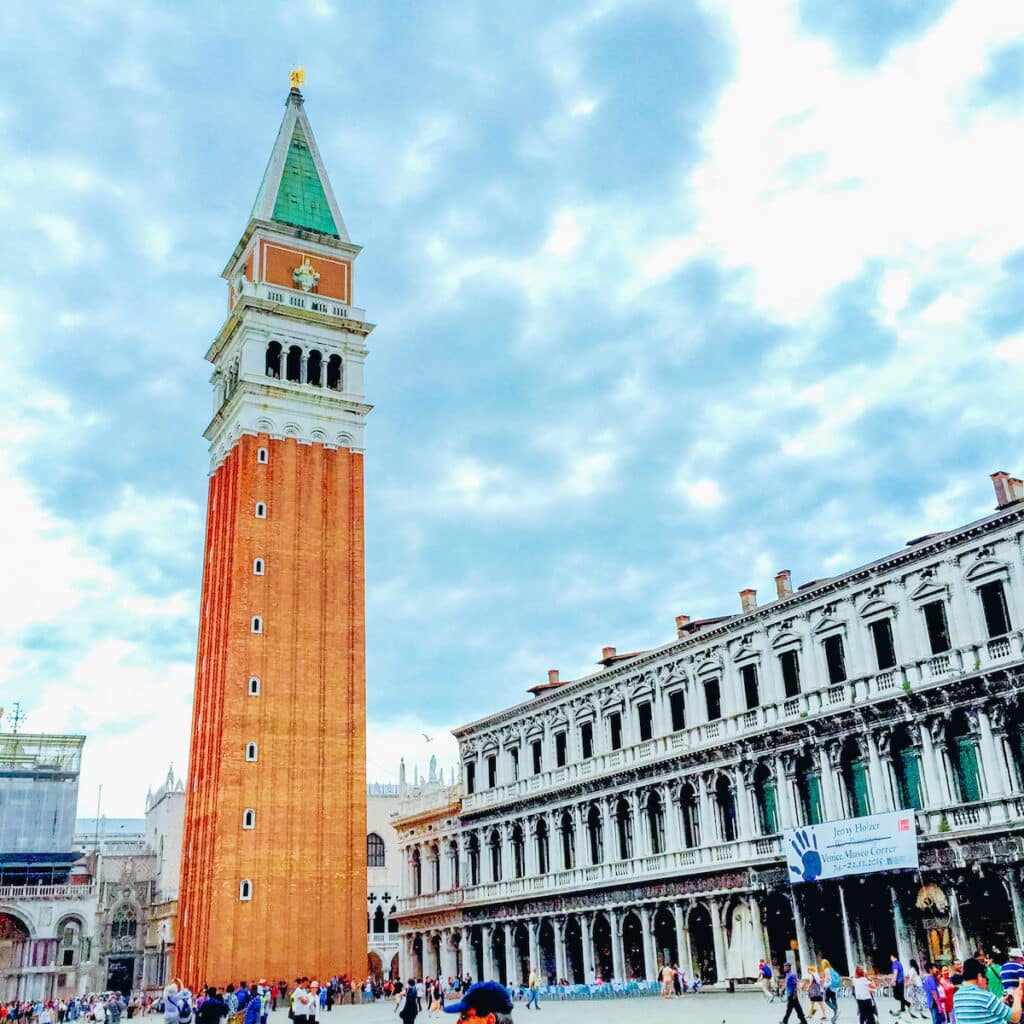
Is Venice Expensive To Visit?
Yes, Venice is known for being an expensive city to visit. Accommodations, dining, and transportation can all be pricier than other Italian destinations. On average, budget your trip to be around $275 per day for an overnight stay.
If you’re seeing Venice in one day, there’s also a new €5 fee that applies to day trippers on certain dates, so factor that in if your visit coincides with those peak periods.
Is Venice walkable in a day?
Yes, Venice is a relatively small city and can be explored on foot in a day. However, it may be challenging to see all of its attractions and museums in one day. Plan ahead and prioritize the places you want to visit.
How much is a gondola ride in Venice?
A private gondola ride costs an average of $120.
Is a gondola ride in Venice worth it?
Whether a gondola ride in Venice is worth it depends on your priorities and budget. Here’s a breakdown to help you decide:
Pros:
- Iconic experience: It’s a classic Venetian activity, offering a unique perspective of the city from the canals.
- Romantic atmosphere: Perfect for couples seeking a special moment.
- Explore hidden canals: You can see parts of Venice inaccessible by larger boats.
Cons:
- Cost: Rides are priced per gondola, not per person, so it can be expensive, especially if you’re traveling solo.
- Short rides: They typically last around 30 minutes.
- Touristy: Gondolas are a major tourist attraction, so expect crowds and potentially generic experiences.
Ultimately, if the gondola ride is a dream experience you’ve always wanted, it might be worth the splurge. But if you’re on a tight budget or prefer less touristy experiences, there are other ways to explore Venice’s canals.

What time of year does Venice smell?
Venice can sometimes have a noticeable odor during the summer months due to the high temperatures and stagnant water in the canals. This is not a constant issue and can vary depending on weather conditions. It’s recommended to bring along some bug spray when visiting Venice during the warmer months.
What months is Venice flooded?
Venice is most prone to flooding during the fall and winter months, typically from October to January. However, it is always recommended to check the current water levels before your trip as they can be unpredictable. The city also has a system in place to help mitigate flooding, so it may not always be a major issue during these months.
Is 2 days in Venice enough?
Yes, it is enough time to see the highlights of Venice and get a feel for the city. Plan and prioritize the places you want to visit to maximize your time.
What are some must-see attractions in Venice?
Some popular must-see attractions in Venice include St. Mark’s Basilica, Doge’s Palace, Rialto Bridge, Grand Canal, Murano Island, and Burano Island. You can also ask locals for recommendations to find unique and lesser-known parts of the city to explore.

How can I avoid the crowds in Venice?
Venice is known for its large crowds of tourists, especially during the peak summer season.
A few ways to avoid the crowds include visiting early in the morning or later in the evening when most tourists have left. Or better yet, stay overnight in Venice.
Explore residential areas rather than popular tourist spots, and consider a visit during the off-season.
What are the do’s and dont’s in Venice Italy?
Do:
- Get lost in the maze of streets: Venice is a pedestrian city, so the best way to explore is on foot. Wander the narrow streets and canals, letting the city surprise you at every turn.
- Explore by vaporetto: The vaporetto is Venice’s public water bus system and a great way to get around the city. It’s a cheap and scenic way to see the canals.
- Indulge in cicchetti and local wine: Cicchetti are small Venetian tapas, perfect for a snack or light lunch. Pair them with a glass of local wine for a delicious and authentic experience.
- Visit St. Mark’s Square: This iconic square is the heart of Venice. Be sure to see St. Mark’s Basilica, the Doge’s Palace, and the Bell Tower. But be prepared for crowds, especially during peak season.
- Take a gondola ride (if it fits your budget): A gondola ride is a quintessential Venetian experience. Just be aware of the cost and negotiate the price beforehand.
- Pack comfortable shoes: You’ll be doing a lot of walking in Venice, so wear comfortable shoes with good grip. The streets can be uneven and slippery.
Don’t:
- Feed the pigeons: It may seem like a harmless act, but feeding the pigeons contributes to sanitation problems in the city. It’s also illegal and you can be fined.
- Swim in the canals: The canals may be picturesque, but they’re polluted and not safe for swimming.
- Litter: Venice is a beautiful city. Help keep it that way by disposing of your trash properly.
- Wear revealing clothing when visiting churches: Many churches have dress codes that require shoulders and knees to be covered.
- Expect a quiet city: Venice is a popular tourist destination, so expect crowds, especially during peak season.
- Forget to bring cash: While many places accept credit cards, it’s always a good idea to have some cash on hand for smaller purchases and water taxis.
Wrapping Up: Is Venice Worth It?
Venice is a must-visit destination offering a chance for true exploration and discovery beyond the conventional tourist paths. The key is to approach the city with an open mind, embrace its unique character, and opt to stay overnight to experience it after the day-trippers have gone.
Further Reading ->> Planning A Trip To Italy: The Ultimate Guide

